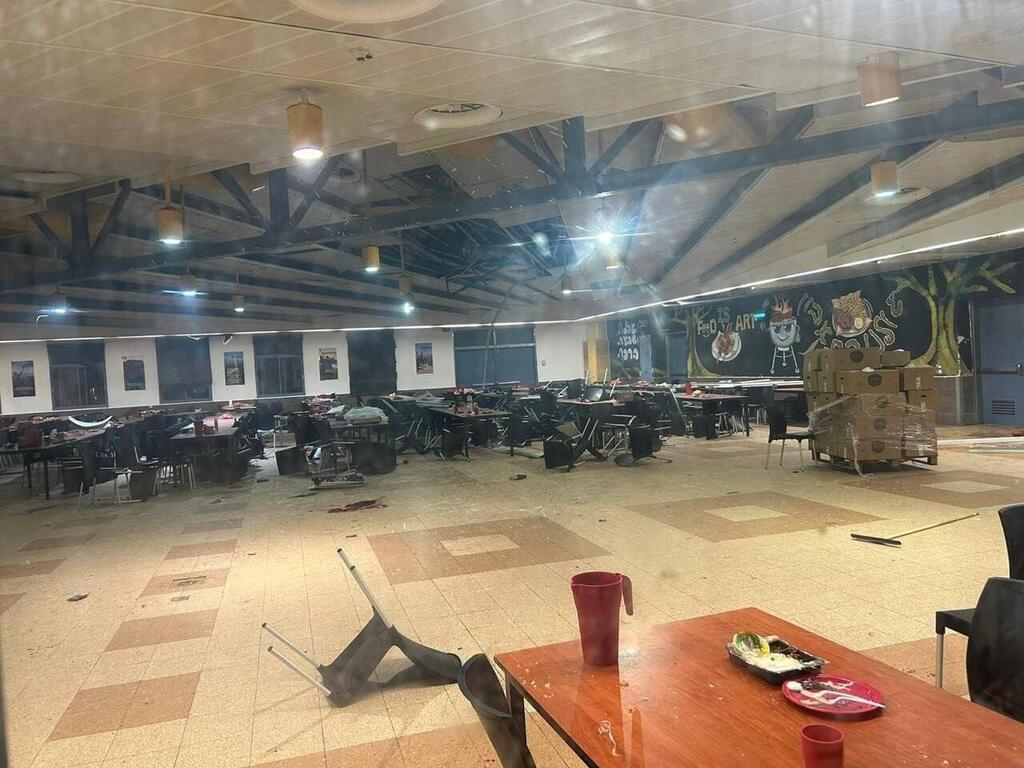Getting your Trinity Audio player ready...
On Monday morning, Air Force Commander Major General Tomer Bar conducted a personal inspection of the Golani Training Base site before the initial assessment of the drone strike's impact. In recent months, IDF has noted that the Air Force intercepts drones daily from all fronts. Major General Bar has ordered the full elimination of all operatives and commanders of Hezbollah's UAV unit (Unit 127) as the most effective countermeasure against the threat. Their elimination will now receive intelligence and operational priority.
UAV making impact
Since the war's onset, about 1,200 UAVs have been launched toward Israel from various fronts. In total, approximately 23,000 different launches have been recorded, including rockets and missiles. Within Israeli territory, 221 UAVs have hit, while the rest were intercepted with a success rate of about 80%. "For over a decade, we have prepared for the UAV threat, and it cannot be said that we were unprepared for it," the IDF stated. "We came strong, but in defense, there's never enough, and there's always room for more progress and investment. We examine every idea and proposal."
The primary reason for the UAV's successful strike on the dining hall was that it disappeared off of the radar 30 miles northeast of Acre after being initially tracked by IDF detection systems. After about half an hour, it hit the base, killing four soldiers and injuring dozens.
In hindsight, IDF understands that the Air Force mistakenly believed the UAV had crashed into the sea. Apart from a brief minute-and-a-half tracking segment found later as it headed toward northern Sharon, it wasn't detected. Radar analysis suggested it could have been classified as a UAV or a flock of birds, but due to a short timeframe and the presence of hundreds of low-altitude targets, including birds, it wasn't classified as such.
The Air Force attempted to shoot it down twice, following the interception of two similar UAVs from Lebanon by a missile boat and Iron Dome. It flew low over roads on its way to the Golani base. Using a GPS system installed on it, it flew to a predefined point with pinpoint accuracy to a specific room. There was no real-time navigation. Its warhead contained three to four pounds of explosives and extensive shrapnel, but the precise angle of impact enabled the deadly strike and penetration.
Initial findings also reveal that a report was received from the police to the Air Control Unit near the northern town of Yokneam about a suspicious aircraft seen by a civilian. However, at the same time, a helicopter matching the description and location was in the sky, most likely causing some confusion.
As a preliminary lesson from the incident, Major General Bar instructed the widening of the margins even further regarding alerts to towns and military camps, which may lead to more alarms and false alerts in the coming days, or "To err on the side of caution with a more permissive alert policy." It also became clear that at the beginning of the launch of the three UAVs, there was a combined event in which Hezbollah launched rockets and three precise missiles toward the Haifa area, indicating a coordinated and synchronized barrage.
IDF identified signs of tactical recovery by Hezbollah after the initial blows it suffered. They are making adjustments and trying to improve after everything we've taken and continue to take from them," according to the IDF.
After the publication of the initial investigation findings, Golani Brigade Commander Colonel Adi Ganot addressed his soldiers. "The Golani Training Base serves as the gateway to the brigade. The great loss we suffered this year is difficult and painful, but, as always, we have known and will know how to recover and rise from it and continue with our mission: defending the State of Israel and its residents."
Get the Ynetnews app on your smartphone:
Google Play: https://bit.ly/4eJ37pE
Apple App Store: https://bit.ly/3ZL7iNv







